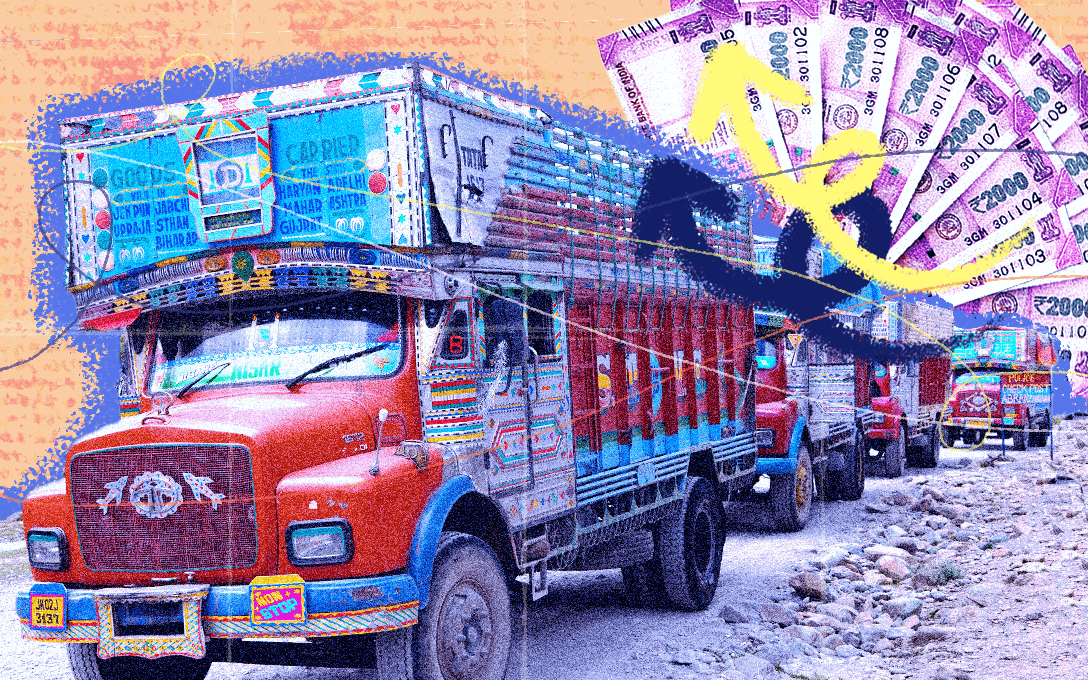Ride with the logistics revolution of India

Think of the economy like a human body. While agriculture, manufacturing and other industries are like the heart and other organs of the body, the arteries and veins that keep the blood flowing throughout can be equated to the logistics sector. Needless to say, the logistics sector is a vital growth driver of the country and its well-being is key to ensuring the overall development of the economy. In India’s case, the story is no different. With rising incomes and more and more people coming into the digital world, our country is going to be more connected than ever – and to ensure that this connection is seamless, the well-being of logistics sector is imperative.
In the general sense, logistics refers to the management of the flow of goods from the point of production to the point of consumption. So shipping, port management, warehousing, transportation, freight management, packaging, among other things – all fall under the purview of logistics. It’s only intuitive to understand the importance of logistics for a growing economy because it is essentially the base on which the country’s supply chain is built.
Even though its importance is vital, the logistics sector in India is made up largely of unorganised players and has been a sector which has not experienced a tech-revolution yet. But this is all set to change, as the importance of logistics in meeting our ambitious growth goals cannot be ignored. Technological advancement, the advent of e-commerce, much-needed government reforms, among other things, are expected to lead the transformation of the Indian logistics ecosystem. Let’s take a look at some of these growth drivers in detail:
Government Support
The coming of the NDA government in India in 2014 marked a key event in India’s economic policy history. It was the first time that the government formalised its aim of making India a manufacturing hub by famously launching the ‘Make in India’ campaign. While the global manufacturing hub is China along with having the largest logistics ecosystem in the world, India is the only country that can hope to be a close alternative to manufacturing for the world. This cemented the importance of an effective and efficient logistics ecosystem that could ensure seamless domestic and international trade, increase global competitiveness and enhance incomes of the roughly 22 million people employed in the sector and more. Working towards that direction, the government braced to set up a dedicated team under the Logistics Division in the Department of Commerce to coordinate growth and development of the sector by improving existing procedures, implementing policy changes, identify bottlenecks and inefficiencies and introduce tech-based interventions and solutions.
E-Commerce growth
The coming of e-commerce in the country effectively cemented the importance of logistics in the country. With a sector that was (and still is, to a large extent) unorganised, the need for thoughtful and process-oriented organisation was more than ever. This was mainly because e-commerce companies penetrated India’s Tier-II and Tier-III cities at an unprecedented pace – cities which were otherwise left out of the logistics ecosystem. What is even more fulfilling, if you’d like, is that recently this trend has been encapsulating rural India as well. The reason why logistics is critical now more than is that e-commerce made it possible for products to find their way to all parts of the country. However, without a seamless logistics system, it would be very difficult to put this plan into action.
Technology-led advancement
The $215 billion dollar logistics industry is highly fragmented and is largely made up of unorganised players. For a market as large as ours, the organised players make up only 10-15% of the sector – a figure that is so low that it is probably the primary reason why technology adoption was not as rampant and as quick as in most of the other industries. However, the good part about technology is its potential to be contagious – in a good way. As various industries with close links to logistics, like retail, are being swept over by digital technology, its only intuitive to think that sooner rather than later we will see technology change the future of this sector and its players. Tech in logistics has the potential to disrupt the existing and inefficient procedures and norms for a leaner and smarter logistics ecosystem by having a groundbreaking interface for various stakeholders that will help in seamless execution and delivery.
According to the World Economic Forum (2016), the digital transformation of the logistics sector could translate into a value of $1.5 trillion for players in the logistics sector and an additional $2.4 trillion worth of societal benefits by 2025. This is of course on a global level, but it outlines the scope of technology in the logistics sector.
Domestic GDP revival
The Covid-19 pandemic dealt a blow to the global financial system like no other. The imposition of lockdowns by all countries, including India, had disastrous effects – one that could be easily seen in GDP numbers. Needless to say, the logistics sector also took a hit as the movement of freight, in all forms, effectively came to a standstill. However, things are tending towards normalcy. And when it does, our quest for normalcy will drive us to a system that was more connected than before. For this to happen, the logistics industry is vital. With rising incomes, especially in rural India, the demand for products and services will rise. To support this growth and to boost our GDP growth, the government is set to focus its energies on improving the logistics infrastructure. Airport up-gradation, improved port connectivity, development of logistics parks and accelerated pace of road construction are all going to be the focal points which will help India achieve its goals on the logistics as well as the economic development front.
In a nutshell…
The logistics ecosystem is the backbone of the supply chain of any country. Ignoring the importance of this industry would create a sustained demand-supply mismatch in the country – which means that due to operational inefficiencies, the consumers (from where the demand comes) aren’t able to procure any products from the producers (from where the supply comes). This would mean that the country isn’t operating in its full capacity and such a scenario would taper the growth and future growth potential of the country.
Moreover, the logistics industry is a leading indicator of the health of the economy. This means that during the early stages of an economic upswing, producers start shipping goods in anticipation of stronger demand. This implies that the logistics sector will be operating at a high capacity as demand for logistic services rises. Conversely, the inception of an economic recession sees producers cut supply and ship lesser goods – which results in the logistics sector taking a hit. So theoretically, if you want to gauge/predict roughly what the economy will be like in the next few months, a good place to start would be to look at the logistics sector. That’s how important this sector is.
All these factors make the logistics sector vital for the health of our economy and this would mean that it is among the sectors that are set to see phenomenal growth over the next couple of years. The Transporting India smallcase was built keeping all this in mind and will help you track and invest in India’s logistics sector in an efficient way.
Happy Investing!
Disclaimer: Investment in securities market are subject to market risks. Read all the related documents carefully before investing. Registration granted by SEBI, membership of BASL (in case of IAs) and certification from NISM in no way guarantee performance of the intermediary or provide any assurance of returns to investors. The content in this article is for informational and educational purposes only and should not be construed as professional financial advice nor to be construed as an offer to buy /sell or the solicitation of an offer to buy/sell any security or financial products. Users must make their own investment decisions based on their specific investment objective and financial position and use such independent advisors as they believe necessary. Disclosures: bit.ly/sc-wc





























































 Transporting India
Transporting India
